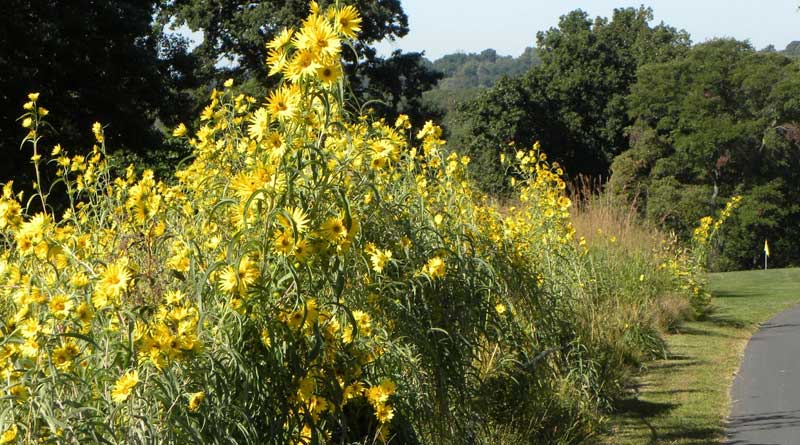Proposed: Relaxed rules for “penalty areas” (currently called “water hazards”): Red and yellow-marked penalty areas may cover areas of desert, jungle, lava rock, etc., in addition to areas of water; expanded use of red penalty areas where lateral relief is allowed; and there will be no penalty for moving loose impediments or touching the ground or water in a penalty area.
Will this Proposed rule change the way we manage the course for play at Rockland Country Club? In a word yes!!! Under the rules of golf TODAY you may not mark these naturalized areas as a Lateral water hazard unless they actually contained a pond or stream you may only mark these areas as:
- Ground under repair: providing relief without penalty
- Out of bounds (stroke and distance penalty)
I am always trying to encourage and develop native areas throughout the course but have found them to be considered too penal for many of our members and guests. The purpose of these is to save labor, water, fertilizer, pesticides, provide habitat etc. making them an important feature of the course. However, these areas are charged with slowing down the game and making it too difficult. For example, it is quite common to allow vegetation around a pond or stream to grow higher because it is usually included within the margin of the hazard providing the same relief as a ball in the water itself. You don’t have to find your ball and you don’t lose the distance making it not as much a penalty as let’s say a lost ball. If there is no water and you allow vegetation to grow it will probably be treated as “through the green” which usually results in a lost ball and a stroke and distance situation making the area much more penal than a water hazard. I think this Proposed rule change will allow golf course superintendents to create or manage more native areas because they will not slow down play and the penalty for hitting in them will not be as severe. In the words of Donald Trump I think this is a HUGE change that will allow superintendents to create more native areas and manage their properties in a more sustainable way.





















